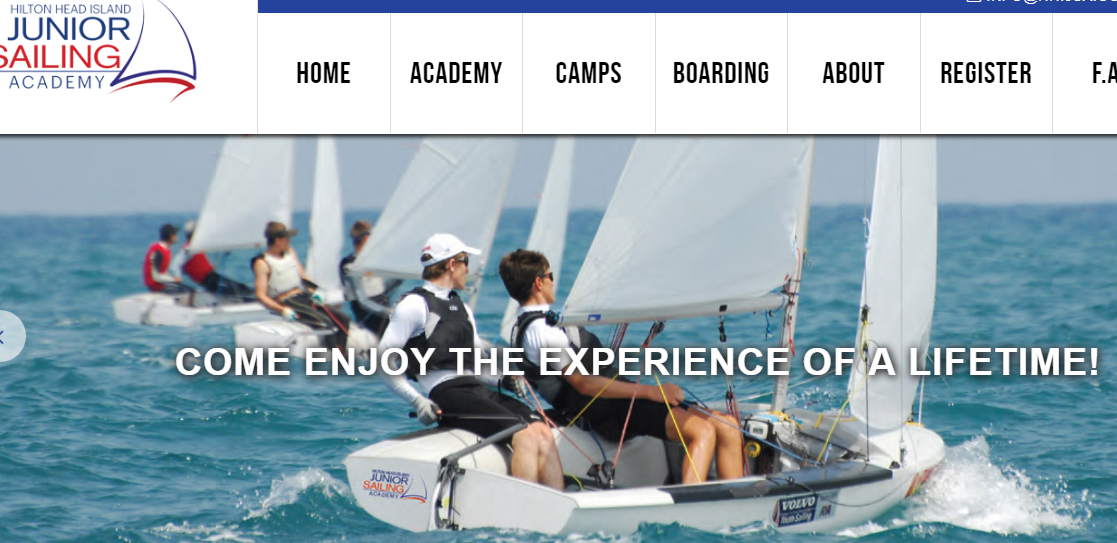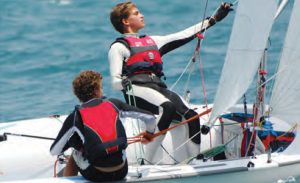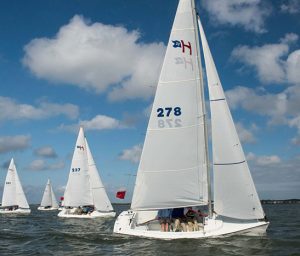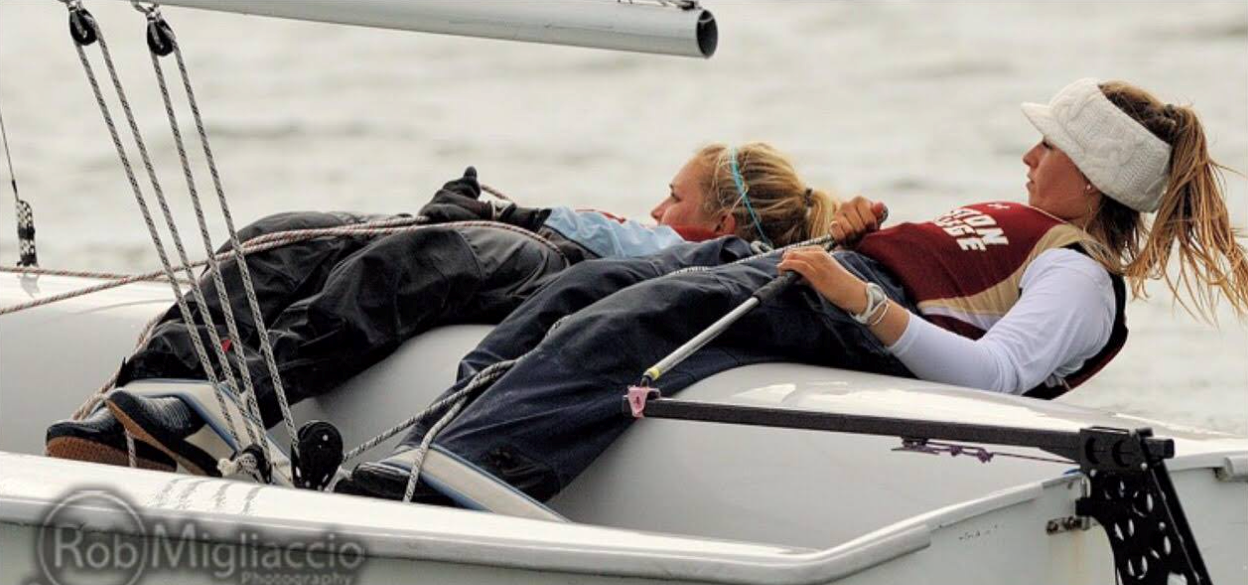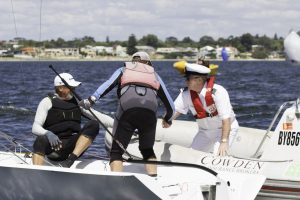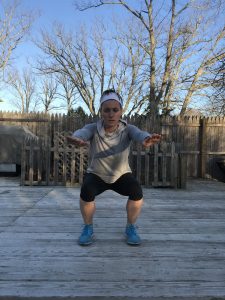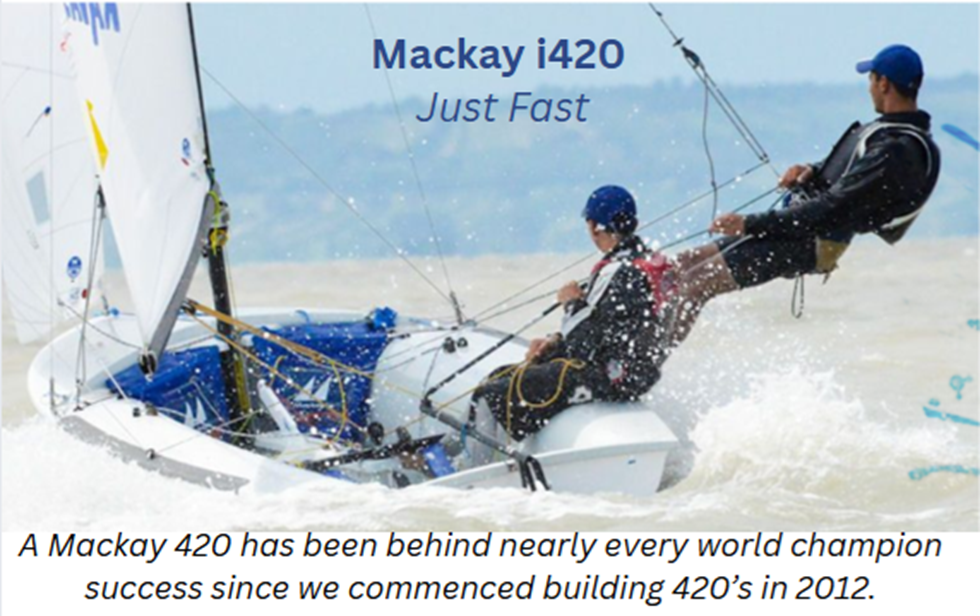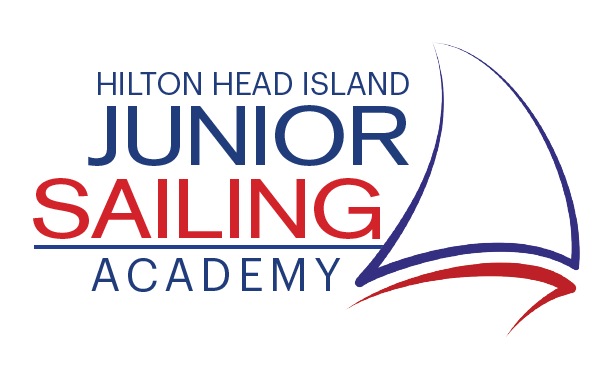
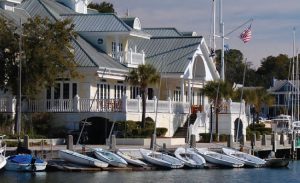
ABOUT HHIJSA
Hilton Head Island Junior Sailing Academy offers a Full-Time, Sailing Academy and Summer Sailing Camp, programs are designed to help a student who wants to focus on sailing for the year building their resume by competing in national ranked regattas.
A key differentiating factor of our boutique junior sailing academy is that our students have an opportunity to compete in regattas throughout the southeast. This opportunity further develops the skills and confidence of each and every student and helps with collegiate exposure.
Hilton Head Preparatory School provides students an opportunity to find their niche, fuel their passions, and work individually with highly-educated faculty through a rigorous curriculum, extraordinary community service programs, and a vast number of extra-curricular activities. From Program Director Mark Newman: “We believe in a well-balanced approach to our junior sailing academy students, as well as life lessons, and a dedication to the well-rounded success of your son or daughter is our ultimate goal. Our team of highly experienced sailing coaches provide individual training and focus on each and every student who attends our sailing academy and school. “
OUR STAFF
The entire Staff at Hilton Head Island Junior Sailing Academy is U.S. SAILING certified. This means that they not only have been trained and tested both on-the-water and off as sailing instructors, they have also been trained and certified in CPR and First Aid. They have extensive teaching, coaching, and racing experience. The program director is Mark Newman, who is a U.S. Sailing level III certified coach who has a vast experience in high school, optimist, J70, and summer program management.

The single-handed trainer at Hilton Head Island Junior Sailing Academy for students up to 15 years of age is the Optimist Dinghy, sanctioned by the South Atlantic Yacht Racing Association (SAYRA), and the most popular class of boats ever built.
The crewed trainer is the club-420, a popular high performance centerboard sloop. These Boat’s are used for introduction to the sport when instructors take beginners for their first sail and also for training intermediates and racers in crew coordination, handling of the jib, sailing “wing-and-wing” downwind, and other sloop skills.
The Harbor 20 is a true one design boat that is raced here at the club every Wednesday night. It gives the sailors the ability for young sailors to experience small keelboats and work cohesively with a crew of 2 or more.
The acquisition of a J/22 has will also help prepare sailors for one design racing as well as symmetrical spinnaker team work. This boat is commonly used for the high school keelboat championship.
The J/70 is a lightweight rocket ship that will take sailors downwind with its asymmetrical spinnaker, and will encourage sailors to understand the concepts they have mastered in Optimist, 420, and Harbor 20’s have relevance in one design keelboat racing.
Please visit our website http://www.hhijsa.com/ to learn more about us!
Blog
Profiles in Pro Sailing: A Conversation with Erika Reineke
Written by Chris Klevan
Sailors are artists. They have a vision towards which they spend thousands of hours refining their craft. Though sailing is an extremely demanding sport physically, it is equally strenuous mentally. How sailors operate on a day to day basis is as influential to how they operate when something as big as an Olympic dream is on the line. You can learn a lot from these small moments. This interview series is a window into minds of the best sailors today, how they work, what makes them tick, what about them, as people, has turned them into the sailor they are today.
It has been quite a year for Erika Reineke. She was named the Quantum Women’s Sailor of the Year, the Intercollegiate Sailing Association’s award for the best woman’s sailor in May of 2017. A couple of months later, she was named the Rolex Yachtswoman of the Year. She was the Noshima Olympic Week Champion. Many see her as the favorite to represent the United States in Tokyo in the Laser Radial, where she will be a legitimate contender to medal. However, Erika will tell you that her mission is to, simply, be the best she can be everyday, inspire those around her and enjoy the experience along the way. Her love of the game is truly inspiring and after watching her sail in the college game for four years at Boston College, it is hard to doubt she isn’t up to the challenge.
You can find more information on Erika’s Olympic Campaign at http://www.erikareineke.com/.
Hey Erika! How’s it going? Thanks for taking the time to talk. How’s Spain?
Hey Chris! Palma is beautiful right now. My training partner from Canada, Sarah Douglas, and I are here for enjoying some winter training before the Princess Sofía Event starts up in April. We had a few glamour days at the start of the camp with sun and warmer weather but yesterday was a bit of a shock. There was no sun, it was pouring down rain, and the air was so cold that we didn’t take our jackets off the entire practice. Even the girls from Finland, Sweden, and Great Britain were chilled to the bone. With icicles forming at my finger-tips, I was still so excited to be out there training with my competitors, all of us trying to out work each other. Nothing is better than that.
Question: What’s the first thing you think about when you wake up in the morning?
Answer: Well, mornings are my favorite! Big time morning person. The first thing I think about is getting my hands on a cup of coffee and some Crispix cereal. After I satisfy my stomach, I put my speakers on to get ready for the first gym session of the day.
Q: Do you like sushi?
A: Sushi is definitely one of my absolute favorite foods. Anything with avocado and salmon is high up on my list.
Q: What has been the most rewarding part of your experience?
A: The most rewarding part through this whole experience is that I feel like I am finding myself and who I really am while I am pursuing my Olympic dream. There are so many sacrifices, setbacks, heartbreaks, doubts, and fears that run through an athlete’s mind that you are able to really to get know who you are through it all. You learn what makes you tick, what excites you beyond measure, and how you are able to bounce back after a loss. I feel extremely blessed to be able to find out who I am through this experience.
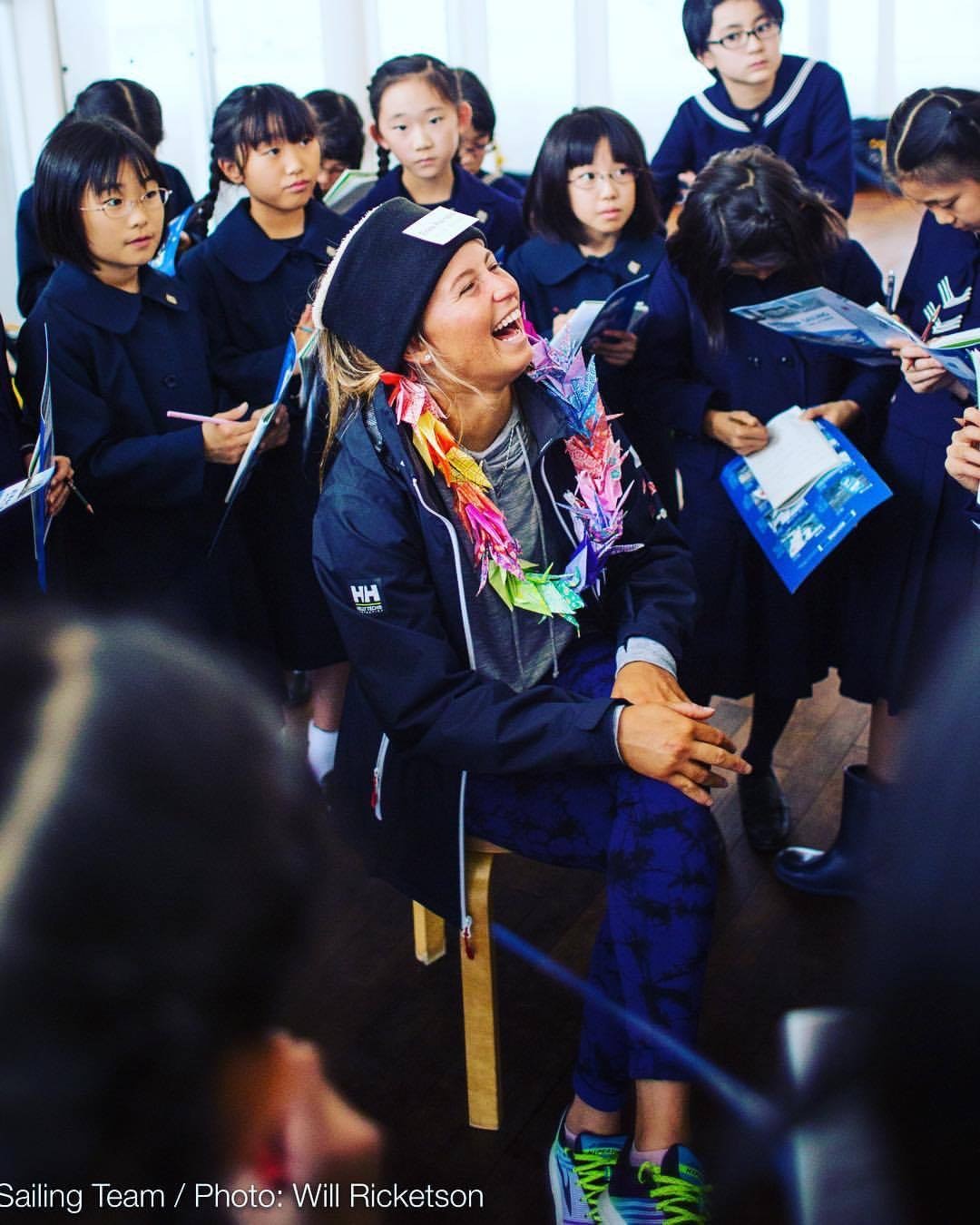
A: Honestly, it is an award that I never quite thought I could achieve. Just the other day I was looking at the past recipients and I couldn’t believe that my name was going to be added to a list containing some of the most outstanding women in sailing’s history. Though I am being recognized for the award, there are so many people that helped me to achieve it. There is nothing like winning an award with a team of people behind you. What seems like a solo victory actually extends out further than you can even imagine. I view this honor as a team victory for the Boston College Eagles and College Sailing who have pushed me to be my absolute best, the US Sailing Team and Staff who have supported my endeavors , and my friends and family who have stood by me through all the hardships that come with having an Olympic dream..
Q: What’s your earliest memory sailing? What has been your hardest moment, is there anything about campaigning that your currently struggling with?
A: My earliest sailing memory is going to the ocean for the first time and being absolutely terrified. I thought a shark was going to eat me. Now that I am older, my fears have moved on from sharks and towards the possibility of not achieving the goals I set for myself. I think that whether you are an athlete or not, everyone has this fear and the reason why it is so scary is because you are putting everything you have into it what you believe is you purpose in life. There’s a chance you might come out with a medal or victory but there’s also a chance you might have nothing at the end. Losing the 2016 Olympic Trials was a tough moment in my life. I didn’t know what to do with myself in the next few months. Everything I had worked for the last seven years dissipated in two events. The next hardest moment was the 2017 Laser Radial Worlds in Arrhus. I didn’t perform or feel like myself the entire regatta. Doubt settled in and I wondered if I had what it takes to be an Olympic Champion. On my 2020 campaign I am learning that there are going to be highs and lows. However, it is the athletes that can remain objective when it seems like the world is caving in around you that come out on top at the end.
Q: Talk to me about how you got into sailing growing up.
A: My parents, who do not sail at all, signed me up one day at our local club, Lauderdale yacht Club. While they were enjoying cold beverages at the patio bar on the weekends, I was out in the ocean crying begging the coaches to take me in.
Q: You’ve done some pro sailing, won the Melges 32 Worlds in Newport in 2016… How did that experience add to what you;re doing now?
A: The Melges 32 Team, Volpe, brought hope and light back into my life. I had been asked to join their team after the 2016 Olympic Trials. After such a devastating loss, the last thing I wanted to do was be anywhere near a boat so I was a bit hesitant to join their program. However, it was one of the best experiences of my life and it helped me find my way again. That summer I fell in love with sailing all over again and I will be forever grateful to the DeVos family for giving me that experience and my Volpe teammates for showing me what it means to give your life to the sport of sailing.
Q: What does it mean to you to represent your country?
A: It’s an honor and a privilege that comes with sacrifice and responsibility. Waking up in the morning and putting on my red, white, and blue gear with USA engraved across my back and on my heart is a surreal feeling. Everything you do is a reflection of your country and your responsibility is to make your country proud.
Q: Do you have any rituals when you sail?
A: I love listening to music before I go out. Having a song stuck in my head while I’m sailing makes being alone in a boat WAY better.
Q: How do you think your experience at Boston College and College Sailing, in general, helped you? How might it have hurt?
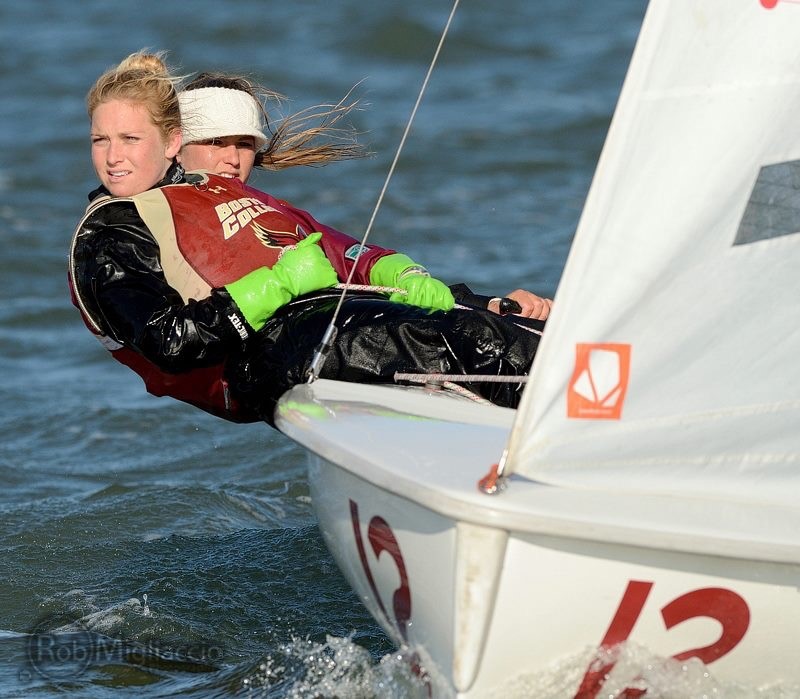
Q: You took a year off from Boston College, describe to me the thought process there.
A: This was never in the plan. I had performed extremely well during the summer of 2014 and the US Sailing staff believed that I had a shot at the 2016 Games and wanted me to take a year off to commit full-time. My initial response was, “No way.” I wanted to continue to sail with team and earn my degree in four years like I had set out to do. However, coach Greg Wilkinson and I looked at the bigger picture. The Olympics had been my dream since I was 12. If there was a chance I could make it, I was going to go all in.
Q: What was your high school experience like at St. Thomas Aquinas?
A: Overall, I hated high school. Everyday I’d be sitting in class staring out the window wondering about what it was like out in the ocean at that moment.
Q: What are you thinking when the boat is going well? When it’s going slow? (or does it never go slow anymore?) What’s your thought process after a beat with a net loss in boats/ after a bad start?
A: When the boat is going well, I’m usually singing in my head or thinking, “this is sweet!” When the boat doesn’t feel right, I start making adjustments immediately until I feel on pace. The biggest thing for me is to trust myself when something doesn’t feel right and not to make excuses like, “It was just a bad race or there was a wind shift.” After a setback, I hit the reset button and act as if the race had just started. Sometimes I make a goal for myself like, “okay, I am going to try to get up to boat ‘x’.” After I set the goal, I get in the zone and usually when I check back in later in the race, I have surpassed boat ‘x’ by a ton.
Q: What advice would you give a 13 year old with lofty sailing goals?
A: Have fun, smile, and remember how lucky you are to be able to such an beautiful and incredible sport.
Q: What would it means to represent America in the 2020 Olympics?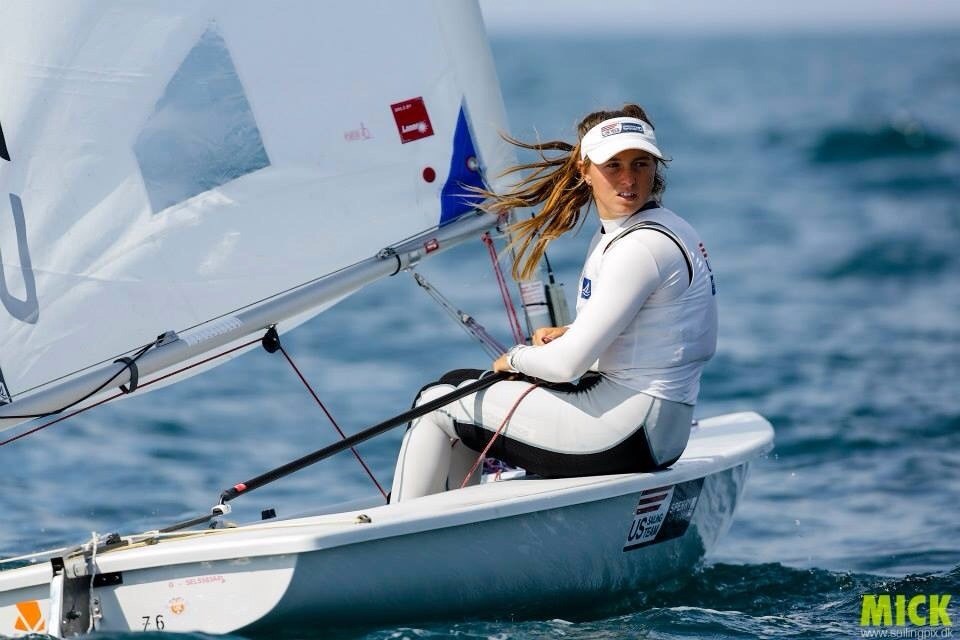
A: It would be a dream come true.
Q: I just finished watching the movie Creed, I’m so fired up right now. What motivates you?
A: I love watching movies or videos of athletes leaving everything out on the track. I feel a connection with them. Even though they aren’t next to me in the flesh, watching them comforts me because it is like seeing someone else who is going through everything I am. I feel like I am looking into a mirror image of myself. I highly recommend the movie Art of Flight. It show the excitement, hardship and beauty of sports with little words; images and possibilities flood the screen.
Q: It seems to me like you always have one of the best attitudes on the racecourse, why is that? Can you think of a time where you’ve had an advantage due to this?
A: I am definitely far from perfect but I do try my best to stay positive out there when things may not be going my way. I think what I have learned is to put things in perspective. I am in a sport where I get to be on the water every single day and most of the venues I sail in are absolutely beautiful. It’s really easy to get caught up in all the pressures and expectations but whenever I take a step back and admire where I am at and how lucky I am to be able to do what I do, it clears my mind and allows me to stay positive and chip away at races.
Q: How would you describe your workspace?
A: My room at home doesn’t have a desk so I rely on Starbucks’ coffee, tables, and jazz music to help me hammer out my work. If you are also inquiring about the cleanliness…I am annoyingly organized. I LOVE highlighting and tabs and notebooks and sticky notes. My view on the whole thing is that no one likes work so why not make it a little more fun with some fun colors? Office Depot has got to be one of my favorite stores.
Q: If you could spend time with a person, living or dead, who would it be?
A: Tom Brady.
Q: What do you like to do when you’re not sailing?
A: So many activities! I love skurfing, going to the beach, hiking, paddle boarding, swimming, snorkeling, walking my dogs, trying new restaurants, participating in my city’s local events like 5ks or sprint triathlons, learning a new song on the piano, and hanging out with friends and laughing about nothing.
Q: What advice would you give yourself 10 years ago?
A: I’d tell myself to play some Bob Marley and remember everything is going to be alright.
Q: What would you say is the Culture of your campaign?
A: My campaign is called the Amerikan Dream Campaign. I chose this title because I believe that investing your life in something you want to pursue is what the American Dream is all about. I want my journey to inspire others to take on their dreams.
Q: What’s your sailing philosophy?
A: Remember to smile.
Q: What inspires you?
A: My dad inspires me the most. He goes through so many battles every day at work. Sometimes he gets a victory and sometimes a loss, but he always keeps the big picture in mind and never gives up. Even on a day that he lost, he always able to smile at the end of the day.
Q: Do any books/ movies have an impact on your sailing?
A: Movies would include Art of Flight, Whiplash, Chasing Mavericks, and the 2017 CrossFit Games Documentary.
Q: How long can you do this?
A: That’s the great thing about sailing, you can do this sport forever. I am not sure what my path is after my 2020 Olympic Campaign. I just plan on living in the moment right now and seeing what happens down the road.
You can find more information on Erika’s Olympic Campaign at http://www.erikareineke.com/.
S1D Marketplace Spotlight: Sailing Business For Sale!
SEA Yacht Sales, a sailing company called Yachtpro (Thailand) – www.sailing-thailand.com is for sale! See FULL LISTING
We are sailors who work in the industry, rather than salesmen.
Sale includes:

2018 Brooke Gonzalez Advanced Racing Clinic
2018 Brooke Gonzalez Advanced Racing Clinic
Sail Newport’s 2018 Brooke Gonzalez Advanced Racing Clinic will be held for the 17th year, Thursday, June 14th (mid-afternoon/report day) through Sunday, June 17th. Come learn from the best coaches and jump start your summer! The online application/resume builder is up and running at www.sailnewport.org/clinicresume Deadline for applications is Friday, March 30, 2018.
In 2001, Sail Newport and the family of Brooke Emmens Gonzalez embarked on a plan to create a high end clinic on the East Coast. We enjoy a reputation for the highest quality coaching, fabulous hospitality, a range of sailing conditions from flat tidal waters to choppy bay, open ocean , and a variety of wind conditions and remarkable guest speakers.
This clinic is held in 29ers, Lasers and Laser Radials, International 420’s, and Club 420’s. It is a BRING YOUR OWN BOAT Clinic, although limited charter boats are available for most classes. 
2018 PROGRAM
The 3 ½ day program will consist of lectures and on-the-water drills with an emphasis on boat handling technique, boatspeed and strategy. This will be combined with information on what it takes to reach your goals in sailing. The Clinic is led by Head Coach John Mollicone, and involves a stellar group of collegiate, Olympic and professional coaches . The coaching team in the past has included Ed Baird, Andrew Campbell, Bern Noack, Alice Manard Leonard, Isabelle Kinsolving Farrar, Elizabeth Kratzig, Jonathon Farrar, Skip Whyte, Sally Barkow, Ken Legler, Chris Rast, Stuart McNay, David Hughes, Leandro Spina, as well as many other top coaches. The 2018 Coach Roster will be posted shortly and will include two coaches from the current US Olympic Sailing Team.
On Saturday Night of the clinic, sailors are treated to a speaker from the highest levels of the sport. Prior speakers have included: Gary Jobson, Josh Adams, Dean Brenner, 470 Gold Medalist Kevin Burnham, Olympic Team Member Katie McDowell, US Sailing Team Technical Director Grant “Fuzz” Spanhake, and America’s Cup veteran and Volvo Race Competitor Ken Read.
The most important thing to remember is that when you get here at Sail Newport, there will be no reason to leave. Showers, food, spare parts, etc. will be here. Even locals will be required to stay on site for the full day. Our coaches want your undivided attention. The more you put into this clinic, the more you will advance because of it so we expect full commitment from the sailor athletes!
“These youth sailors receive the highest level coaching from some of the best sailors and coaches in the country” says Brad Read, Executive Director of Sail Newport. “Emphasis is on speed producing factors and techniques that work on long courses where speed is at a premium.”
Application deadline: March 30, 2018 (midnight)
Acceptances: Will be contacted via email by April 15th by Clinic Director and Head Coach John Mollicone
Selected participants will receive an online link to Sail Newport’s registration and payment gateway. At that time, you will be able to view the final coach list, updated schedules and charterboat information.
Information and the Online Application/Resume Builder can be found at http://www.sailnewport.org/Clinics/gonzalezclinic
For any questions please contact Clinic Director, John Mollicone, at [email protected] or Kim Hapgood at [email protected]
2018 Viper 640 World Championship Results & Report
Another Family World Title
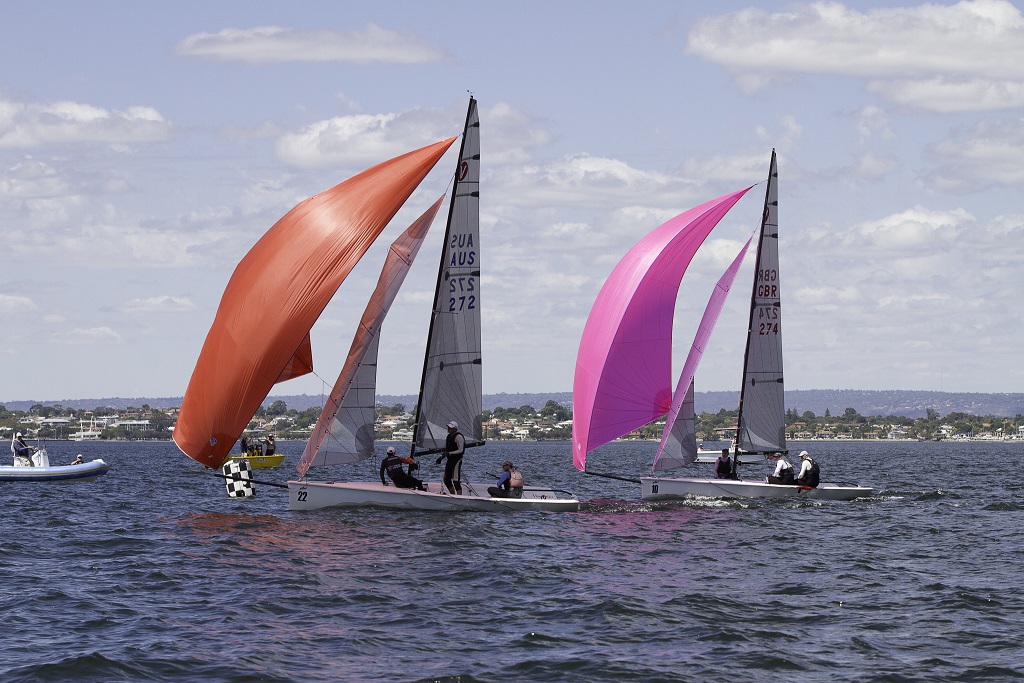
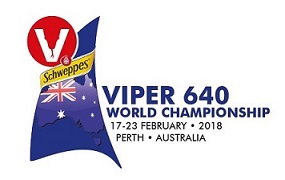
Justin Scott repeated his success at last year’s Worlds by finishing second with two third placings in the last two races. The American stated at the start of the campaign that he came to Perth expecting a top five finish, so he would have been delighted with his performance. Sailing with young local guns Conor Nicholas and Luke Elliot, the combination improved steadily throughout the regatta, with no worse than a third place in any of the final six races.
Match racer Keith Swinton, originally from Perth but resident these days in the USA, held down second place until the final day, bombing out with an early start in the last race of the series and allowing Scott to relegate him to third.
Conditions were difficult for both competitors and officials today. The forecast strong winds did not materialize and instead winds shifted between 140 and 190 degrees for some time this morning before finally settling enough to allow racing to proceed after a long delay. Wind strength never reached ten knots.
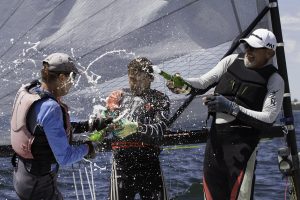
The consensus from competitors was a big endorsement for the championship. Most praised the organization and the way racing was run, the weather offered a little for everyone – from light breezes through to a testing 28 knot gear breaker, this regatta had it all.
For detailed results go to: http://www.topyacht.net.au/results/sopyc/2018/vipwlds/vipwlds/SGrp2.htm
Live video feed of the last moments of the final race, won by Jerwood just ahead of Britain’s Lawrence Crispin:
https://www.facebook.com/SofPYC/videos/1812823678748021/?comment_id=1812886718741717
Bernie Kaaks
Media Officer – Schweppes Viper Worlds 2018
Leg Strength: 30 Day Squat Challenge
Ready? Another 30 day challenge coming at you! We have built strength in our arms and core with our previous 30 day challenges; Building the Core: 30 Day Plank Challenge and Mastering The Push Up: 30 Day Challenge. Now its time to give your legs a workout! In this 30 day squat challenge you will build leg strength that will help you to hike longer and stronger!
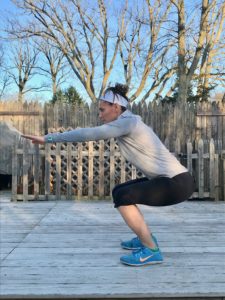
Squats are a great total lower body workout, and they work the major muscles groups of the butt, hips, and thighs. Just like our other 30 day challenges, no equipment is required to complete a squat making them a great exercise that can be done anywhere. Squats have many benefits. To name a few the squat strengthens the legs, strengthens the core, and increases flexibility.
How to Squat
In our video below you will see the proper way to squat. You always want to make sure you are using proper form to avoid injury.
1. Stand with your feet hip-width apart feet facing forward.
2. Keep your chest up as you lower your body down and back like you are sitting in a chair.
3. Your arms can either be kept in front of you for balance or behind your head as you squat down.
4. Lower until your thighs are parallel to the ground or as far as you can squat down.
5. Rise back up slowly and as you stand squeeze your glutes.
6. Repeat!
Things to remember:
1. Keep your feet flat on the floor.
2. Don’t arch your lower back.
3. Keep your abs tightly activated.
4. Make sure your knees don’t pass over your toes.
5. Keep your chest up.
In the 30 day squat challenge you will have fun while building leg strength. By the end of the 30 days, your legs will be stronger and you will be ready to hike longer, and stronger! Remember always practice proper form to avoid injury. Good luck and comment below on how you are enjoying the 30 day squat challenge!
For more information on fitness and nutrition for sailing contact [email protected]. Also check out Sailorcise on Facebook, Twitter, and Instagram for daily tips on fitness, nutrition, and sailing.
